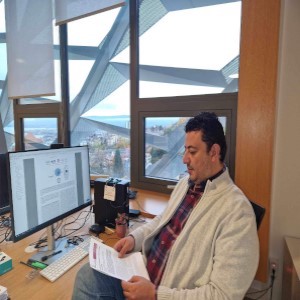Using AI to control energy for indoor agriculture
30 September 2024
Published online 23 September 2024
An imaging method can track molecules inside cells, paving the way for a better treatment and diagnosis of genetic diseases.

Technology to study the precise movements of the DNA and the DNA-binding proteins inside the cell’s nucleus at minute precision has been developed by a team including two Egyptian scientists.
Haitham Shaban, a researcher at the AGORA Cancer Research Center and lead author of the study, published in Nature Protocols, explains that high-resolution diffusion (Hi-D) mapping can examine interactions within genetic material in real time.
Co-author Roman Barth who works at the Department of Bionanoscience at Delft University of Technology, in the Netherlands, outlines the technique’s use of high-resolution imaging techniques like spinning disk and super-resolution microscopy.
Computational algorithms are also used to analyse the data and classify the movements according to biophysical criteria. Researchers can then draw maps of the entire genome quickly, easily and conveniently. The researchers have implemented Python software to make the method more user friendly.
Understanding the dynamics of movement within the cell advances knowledge of cellular and molecular biology, paving the way for new discoveries, enhancing the ability to treat diseases, and improving human health in general.
It can then help researchers determine how to open specific parts of the genome and close them to control the genome’s activity. It will also help get a better understanding of how the cells react to internal or external changes, and how they react with other proteins or components.
Abnormal changes in the movement of molecules within the nucleus are associated with the onset of diseases. Understanding these movements is essential for developing new strategies for diagnosis and treatment of genetic diseases such as cancer.
“The main advantage of the new technology is that it is cheap, easy to use, and does not require large resources or intensive training,” Shaaban says, describing it as “a huge step towards a better understanding of the dynamics of the genome inside living cells with unprecedented precision.”
Link to original article is here.
doi:10.1038/nmiddleeast.2024.297
Stay connected: